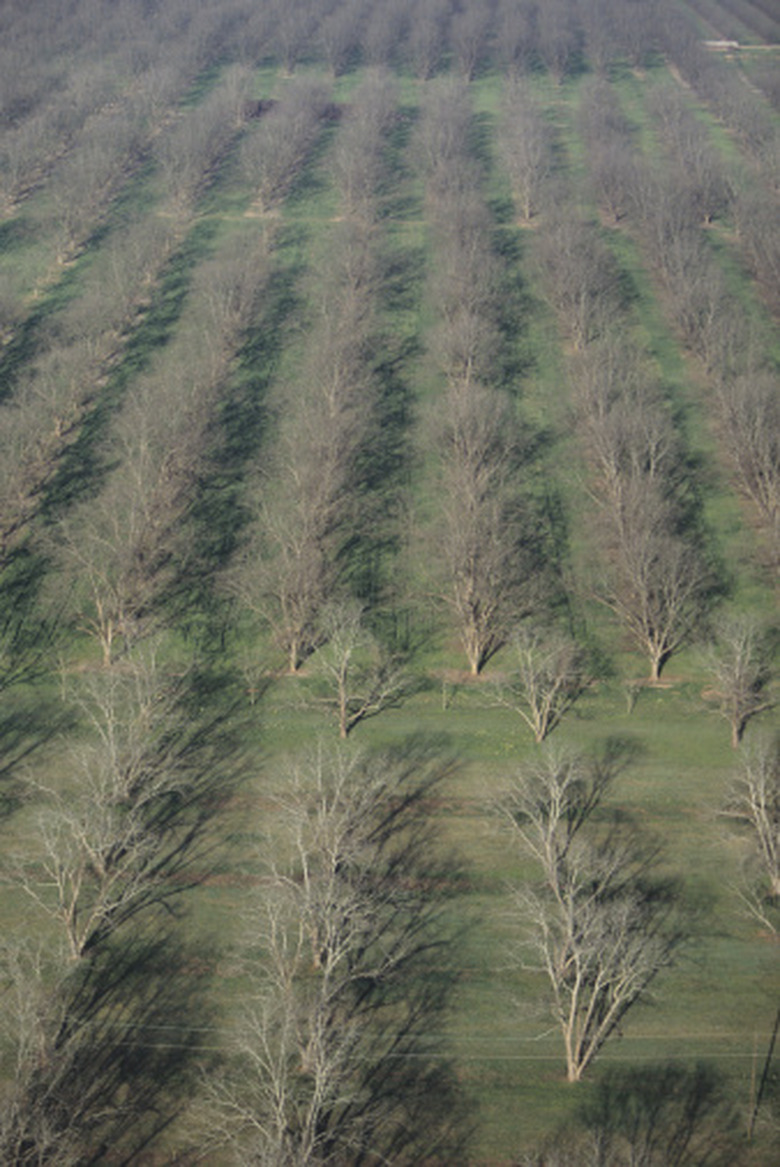The Growth Rate Of Pecan Trees
A deciduous tree, the pecan (Carya illinoensis) grows to a height of up to 130 feet but usually averages 70 to 100 feet. A native of the U.S., the tree grows from eastern Kansas to western Alabama, Tennessee and Ohio and extends into parts of Texas.
A deciduous tree, the pecan (Carya illinoensis) grows to a height of up to 130 feet but usually averages 70 to 100 feet. A native of the U.S., the tree grows from eastern Kansas to western Alabama, Tennessee and Ohio and extends into parts of Texas. It thrives in the Lower Mississippi Valley and is widely cultivated across the southern U.S. for its nut production.
Growth and Seed Production
The pecan tree grows approximately 35 inches per year on sandy loam soil. The tree begins to produce viable seeds when it reaches 20 years of age. Maximum seed production begins at 75 to 225 years of age. A mature tree will produce and average of 100 lbs. of seeds per year.
- A deciduous tree, the pecan (Carya illinoensis) grows to a height of up to 130 feet but usually averages 70 to 100 feet.
- The pecan tree grows approximately 35 inches per year on sandy loam soil.
Seedling Growth Time Frame
The pecan tree drops its seeds in the fall but they require a period of cold stratification before germination can occur. The seeds begin to germinate and seedlings grow in April. Seedlings average a growth rate of 3 feet per year.
Warning
Seedlings die quickly if they do not receive ample sunlight. The pecan tree is shade intolerant. The seedlings also require a well-draining location to grow and will often die in heavy clay soils. The tree does have the ability to regenerate and produce sprouts from its trunk if it is burned in a fire. Fires will kill seedlings quickly.
- The pecan tree drops its seeds in the fall but they require a period of cold stratification before germination can occur.
Care Of Pecan Trees
The pecan tree, scientifically named Carya illinoinensis, is the largest of the hickory trees and known for its prolific nut production. Select the tree's planting location. Choose a spot in anticipation of the tree's full growth, and be sure it is at least 30 feet away from any other large tree or house. Adult pecans have a reputation for being very drought tolerant, and the adult tree only needs watering if the summer months become ferociously hot and dry for extended periods of time. Fertilize the pecan tree once or twice a year. Use a 10-10-10 fertilizer mixed with zinc nutrients, and fertilize below the grass roots. Crack them shortly after harvest.
- The pecan tree, scientifically named Carya illinoinensis, is the largest of the hickory trees and known for its prolific nut production.
- Choose a spot in anticipation of the tree's full growth, and be sure it is at least 30 feet away from any other large tree or house.
